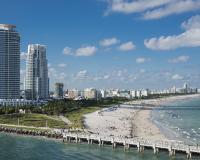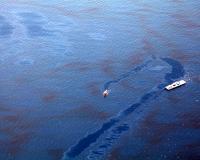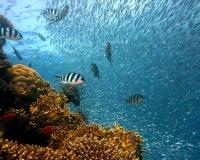
Vibrant Environment
Oceans And Coasts
All | Biodiversity | Climate Change and Sustainability | Environmental Justice | Governance and Rule of Law | Land Use and Natural Resources | Oceans and Coasts | Pollution Control

Effectively addressing the ever-evolving challenges for coastal communities is a daunting task, one that requires the coordinated effort of government, nongovernmental organizations, and corporations. In a time of limited resources and increased requirements for cost-sharing to obtain government funding for local projects, the support of all stakeholders is required if we are to effectively address community and environmental needs.

Paul McElroy saw potential for restoration in areas often overlooked and considered blighted by most. From the banks of the Woonasquatucket River to an abandoned landfill in Narragansett Bay, he saw what could be.

I was introduced to mangroves early in my childhood during family trips to Bear Cut in Key Biscayne, Florida—the same plants that grew in my family’s hometown on the northern coast of Cuba. In 2003, I first used mangrove imagery in my artwork as a metaphor for the immigrant. I imagined the mangrove propagules floating along the water and setting root on a sandbar. Little by little they would grow alongside each other, capture sediment, create land, and build new habitats. Like immigrants in a community who come together to support one another, the roots of each mangrove tree come together to create a formidable structure that protects against the dangers of storm surge.

Part One of this blog examined various U.S. whistleblower laws that could be applied to international fisheries crime. Part Two will continue a discussion of the Lacey Act, perhaps the most powerful whistleblower reward law addressing illegal trade in fish, wildlife, and plants. The Lacey Act makes it unlawful for any person subject to U.S. jurisdiction to import, export, transport, sell, or purchase fish, wildlife, or plants in violation of any U.S. or foreign law, including the Convention on International Trade in Endangered Species of Wild Fauna and Flora.

The U.S. Army Corps of Engineers, New Orleans District, is seeking comment on the draft environmental impact statement (EIS) for the Mid-Barataria Sediment Diversion (MBSD) restoration project. If approved, the MBSD would reconnect the Mississippi River to Louisiana’s Barataria Basin and, through the controlled release of sediment-laden freshwater from the river, allow sediment and nutrients to flow into the basin with the goal of restoring wetlands and slowing the rate of coastal land loss. (Read more about sediment diversions in our earlier blog post.)

Despite advances in environmental law in recent decades, issues with implementation and enforcement continue to impede environmental progress worldwide. This is especially true in the case of illegal, unreported, and unregulated (IUU) fishing. Because IUU fishing is nomadic and international, detecting and penalizing perpetrators can be difficult, if not impossible. Organized, transnational groups are increasingly turning to illegal fishing, whether to produce income, fund their networks, or conceal trafficking of drugs and people on their ships. Government—such as through customs or ports—likewise plays a large role in facilitating and concealing these illegal activities.

Around 40% of people in the United States live on the coast. This means over 127 million people live in regions where the future of public health and safety, housing and job security, and environmental stability is threatened by coastal impacts of climate change. According to the U.S. Global Change’s Fourth National Climate Assessment, coastal cities will likely face a number of climate-related challenges before the end of the century, including sea-level rise, which would threaten property and infrastructure, degrade important ecological systems, and exacerbate social inequalities.

When it comes to the climate crisis, some say we can innovate our way out. In his 1989 essay The End of Nature, the writer Bill McKibben mused: “We may well be able to create a world that can support our numbers and our habits, but it will be an artificial world — a space station.”

The Deepwater Horizon exploded in the Gulf of Mexico more than 10 years ago. Yet hundreds of individuals across the Gulf coast are still battling BP in court for damages related to a host of ailments arising from exposure to oil, dispersants, or both. A recent order out of the Northern District of Florida (N.D. Fla.) granting BP’s summary judgment motion as to one set of plaintiffs may be a sign of things to come. Regardless of this ruling, the sheer volume of these cases may occupy dockets for months or years.

On January 27, President Biden took historic action to protect 30% of U.S. lands and waters by 2030, launching the most ambitious conservation plan in history. Known as “30x30”, the goal aims to provide an inclusive and bold vision for safeguarding America’s ocean, air, water, food, and communities. There are many ways the Administration could set out to achieve this goal in our ocean.